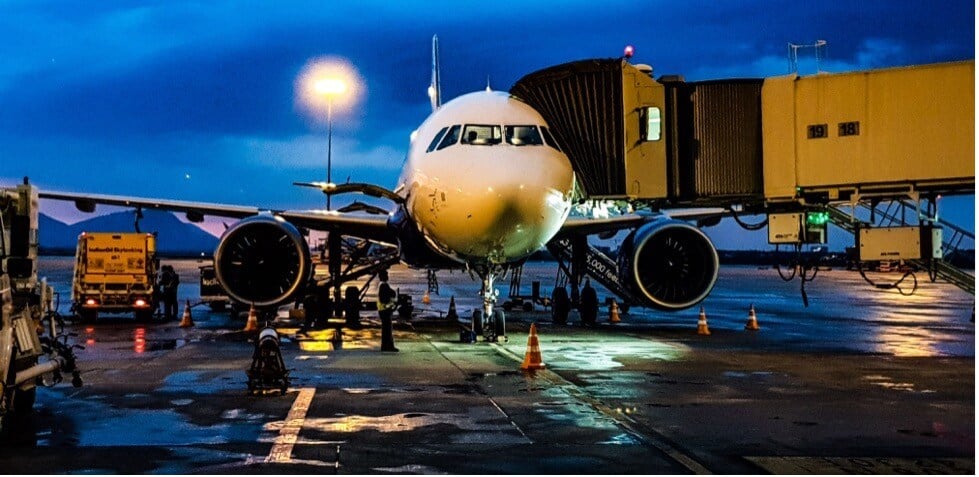Fatigue in aviation is a critical concern, including for ground operations workers who are responsible for the safe handling of aircraft, baggage, and maintenance tasks. The aviation industry’s round-the-clock nature and the demanding physical labor involved in ground operations make aviation fatigue management essential for ensuring the safety of both workers and airline operations. Recent safety alerts from the FAA underscore the importance of addressing fatigue risks, and forward-thinking airlines are implementing Fatigue Risk Management Systems (FRMS) to mitigate these hazards.
In this article, we’ll explore the importance of aviation fatigue management, the risks of fatigue in ground operations, and essential strategies for implementing a successful fatigue management system for aviation ground operations.
The Risks of Fatigue in Aviation Ground Operations
Ground operations workers play a vital role in the safety and efficiency of airline operations. Tasks like aircraft maintenance, baggage handling, refueling, and marshaling are labor-intensive and often performed in challenging environments. Workers face exposure to high noise levels, extreme weather conditions, and long, irregular work hours. These factors make them especially vulnerable to fatigue.
Fatigue can have severe consequences in aviation, particularly in ground operations where safety lapses can result in damage to aircraft, equipment, or even injury. The disruption of circadian rhythms due to irregular hours or night shifts for ground operations workers can lead to poor sleep quality, impaired cognitive function, and decreased motor skills.
For safety-critical personnel, the risks of fatigue include:
- Increased risk of accidents: Fatigued workers are more likely to make errors, leading to accidents during aircraft towing, maintenance, or ground handling operations.
- Decreased performance: Fatigue slows reaction times and decreases awareness, putting both personnel and equipment at greater risk of harm.
- Higher absenteeism and turnover: Chronic fatigue can lead to burnout, absenteeism, and a higher rate of employee turnover, adding operational strain.
Real-World Example: Fatigue-Related Incident in Aviation Ground Operations
A recent incident reported by The Wall Street Journal highlights the serious risks posed by fatigue in aviation ground operations. A worker engaged in a critical safety lapse during aircraft towing operations after working extended hours. The error could have been avoided with proper aviation fatigue management protocols in place, emphasizing the need for fatigue management systems that address staffing levels, work hour limits, and fatigue education and training, to protect both workers and equipment.
This incident underscores the importance of integrating aviation fatigue management into Safety Management Systems (SMS) to ensure that workers remain alert and capable of performing their duties safely, especially during night shifts or extended hours.
Key Strategies for Aviation Fatigue Management
1 - Implement a Fatigue Risk Management System (FRMS)
An effective Fatigue Risk Management System (FRMS) detailed in a Fatigue Risk Management Plan (FRMP) is a key component of aviation safety.
FRMS integrates into an airline’s overall Safety Management System and includes several crucial components, such as:
- Work hour limitations: Establishing strict limits on the number of hours employees can work consecutively with a well-defined exception process, to ensure they have adequate rest.
- Rest period minimums: Setting mandatory rest periods between shifts to allow workers to recover and maintain alertness.
- Shift rotation guidelines: Designing schedules that minimize disruption to circadian rhythms by avoiding excessive night shifts or rapid shift changes.
By creating and enforcing these policies, airlines can significantly reduce fatigue-related risks for their ground operations.
2 - Provide Education and Training on Fatigue
Education is a cornerstone of aviation fatigue management. Ground operations workers must be educated about the dangers of fatigue, its symptoms, and how to manage it. Training programs can include:
- How to recognize signs of fatigue: Helping workers identify when they are too fatigued to work safely.
- Fatigue mitigation strategies: Providing practical advice on improving sleep quality, such as creating a sleep-friendly environment, and adopting healthy sleep habits.
- Shiftwork lifestyle management: Teaching employees how to handle long shifts or irregular hours more effectively, reducing the impact of fatigue.
3 - Use Software Tools for Fatigue Assessment
Airlines can benefit from using advanced software tools to assess fatigue risks across work schedules. These tools use scientifically validated biomathematical fatigue risk models to analyze work schedules and identify high-risk periods where fatigue is most likely to occur. By integrating these insights into their scheduling, airlines can reduce the potential for accidents caused by fatigue.
4 - Conduct Fatigue Risk Assessments
A regular fatigue risk assessment is essential for identifying specific risks within aviation ground operations. This assessment should include:
- Gap analysis of current fatigue management strategies: Uncovering areas of opportunity to mitigate fatigue risk.
- Analyzing incident reports: Reviewing past incidents to determine if fatigue was a contributing factor.
- Surveying workers: Gaining feedback from employees on their experience with fatigue and their ability to maintain alertness during shifts.
With this data, airlines can tailor their aviation fatigue management plans to address the unique needs of their ground operations.
5 - Monitor and Adjust Fatigue Management Policies
Continuous monitoring is key to ensuring that aviation fatigue management strategies remain effective. Regularly reviewing work schedules, employee performance, and safety records allows airlines to adjust their FRMS as needed, ensuring that it continues to meet the demands of ground operations.
Airlines should also be prepared to revise work hour limitations, rest periods, or shift rotation guidelines based on ongoing data and incident reports.
The Benefits of Aviation Fatigue Management
Implementing robust aviation fatigue management practices offers numerous benefits for both airlines and their ground operations teams:
- Improved safety: With fewer fatigue-related errors, ground operations become safer for employees and equipment.
- Increased operational efficiency: Reducing incidents caused by fatigue minimizes delays and damage to aircraft, leading to smoother operations.
- Better employee well-being: Workers who are properly rested are healthier, more engaged, and less likely to suffer from burnout or chronic fatigue.
- Lower operational costs: Fewer accidents and injuries mean lower costs related to damage repair, workers' compensation, and absenteeism.
Taking the Next Steps in Aviation Fatigue Management
As the aviation industry continues to evolve, ensuring the safety of ground operations workers remains a top priority. Aviation fatigue management is critical to reducing risks and maintaining the reliability of airline operations. By implementing comprehensive fatigue management strategies and integrating them into an overall Safety Management System, airlines can bettter safeguard their employees and operations.
.











